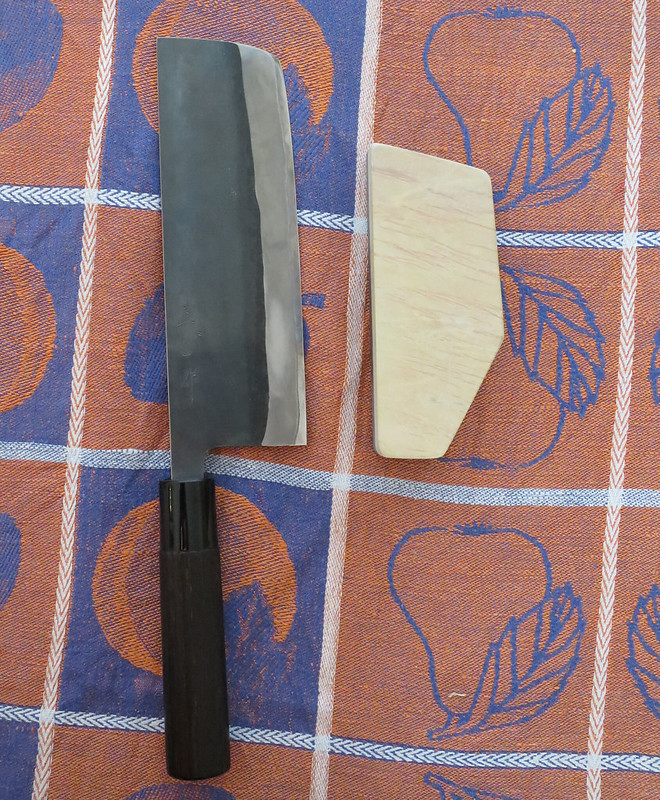First off. I am not a polisher. I do not have the skills (patience) for it despite my sincere desire to want to learn. Most of these stones I have very little experience with using for knives. I got most of them for razor sharpening. For the most part I think that coarse work is best done with sandpaper, synthetics, and belt grinders. Coarse naturals in my experience are pretty slow. Even on relatively softer vintage razor steel, I only have a few stones I would use to try and cut a razor bevel for instance unless the razor was in pristine condition to start with. None of these stones would really work for any significant reprofiling or thinning. So with those caveats, I will begin.
Test Knife - 165mm Tosa Nakiri from Hida Tool
Iron clad mystery steel
About 59-60 HRC by my guess
The knife has not been sharpened or touched up for a month. It's in rough shape. It has quite a bit of damage to it because I used it chop some chicken carcasses up for stock. It's a little rusty because it got put into a plastic knife cover a little bit wet. Oops! The bevels were last polished with a Naniwa Superstone 2k.
I will be sharpening the wide bevels. I will spend 2 or 3 minutes scrubbing each side of the knife on each stone and then take a pic or two.
Here are the stones. None of these came with labels or anything. They are all fleabay specials. So what I call them is my best guess based the seller's claims and my own research, if you think I have misidentified any of these or know one of the mystery ones please let me know.
Left to right:
Pierre du levant/Turkish oil stone
Washita
Unknown Greenish Grey Stone
Unknown Reddish Grey Stone
Soft Arkansas
Natural Coticule/Belgian Blue Combo
Guangxi River Rock/Chinese 12K/PHIG
Butterscotch Arkansas
Owyhee Jasper

































